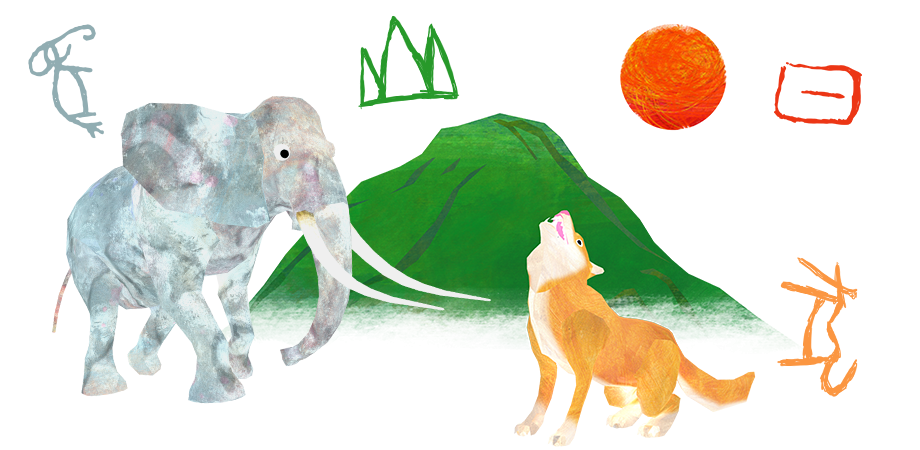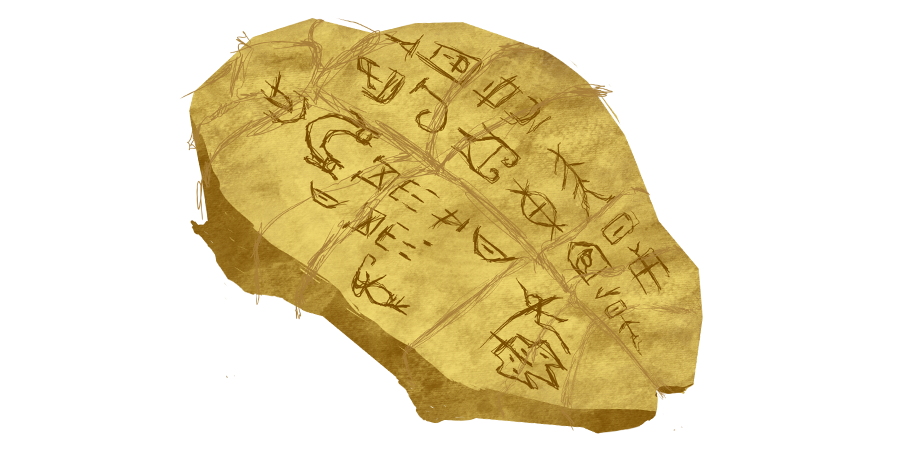Story of the Time when Gods were Everywhere
Sisyu + teamLab, 2013-, Interactive Digital Installation, Calligraphy: Sisyu, Sound: Hideaki Takahashi




















ดูต่อ
Story of the Time when Gods were Everywhere
Sisyu + teamLab, 2013-, Interactive Digital Installation, Calligraphy: Sisyu, Sound: Hideaki Takahashi
เมื่อผู้เล่นแตะสัญลักษณ์ที่อยู่บนจอ สัญลักษณ์เหล่านั้นจะแปลงร่างเป็นภาพที่เป็นความหมายของสัญลักษณ์นั้น เมื่อภาพต่างๆ เพิ่มจำนวนมากขึ้น ก็จะเกิดเรื่องราวต่างๆขึ้นมา ภาพที่เกิดจากสัญลักษณ์ต่างๆ จะมีอิทธิพลต่อกัน และภาพที่หลากหลายเหล่านี้ก็ได้รับอิทธิพลจากการกระทำของผู้เล่นเช่นกัน เช่น นกจะบินมาเกาะต้นไม้ แกะวิ่งหนีหมาป่า และแกะจะเต้นรำเมื่อผู้เล่นแตะที่ตัวแกะ
ที่มาของผลงาน
The origin of Chinese characters
-
Since ancient times, words have been seen as possessing a spiritual power, the spiritual power of language. However, as words disappear, this spiritual power of language could not reside in words. According to the theories of Chinese literary scholar Shizuka Shirakawa, characters were born so that the power that people invested in words could be sustained and made more effective by putting the words down as pictographs.
-
Chinese characters are believed to have been created around 1200 BC, during the Shang Dynasty.
Kings of that era communicated with the gods through fortunetelling. Fortunetelling was practiced in connection with rituals and weather, and with every major decision concerning the dynasty, including war, harvests, and hunting. Inscribing records of communications with gods (fortunetelling) on tortoise shells or animal bones in the form of pictographs was the beginning of oracle bone script – that is, Chinese characters.
-
Reference
Shirakawa, Shizuka. Kanji: Oitachi to Sono Haikei. Iwanami Shoten, 1970.
Matsuoka Seigō. Shirakawa Shizuka: Kanji No Sekaikan. Heibonsha, 2008.
การโต้ตอบกับผลงาน
-
1
แตะที่สัญลักษณ์ และสังเกตการเปลี่ยนแปลง
-
2
รูปภาพที่มีความหมายเดียวกับสัญลักษณ์จะปรากฏ
-
3
เรื่องราวต่างๆก็จะเริ่มต้น
ทักษะติดตัว
- Pattern Recognition
- Concept of Symbols
- Understanding of Causal Relationships
- Concept of Light and Shadow

